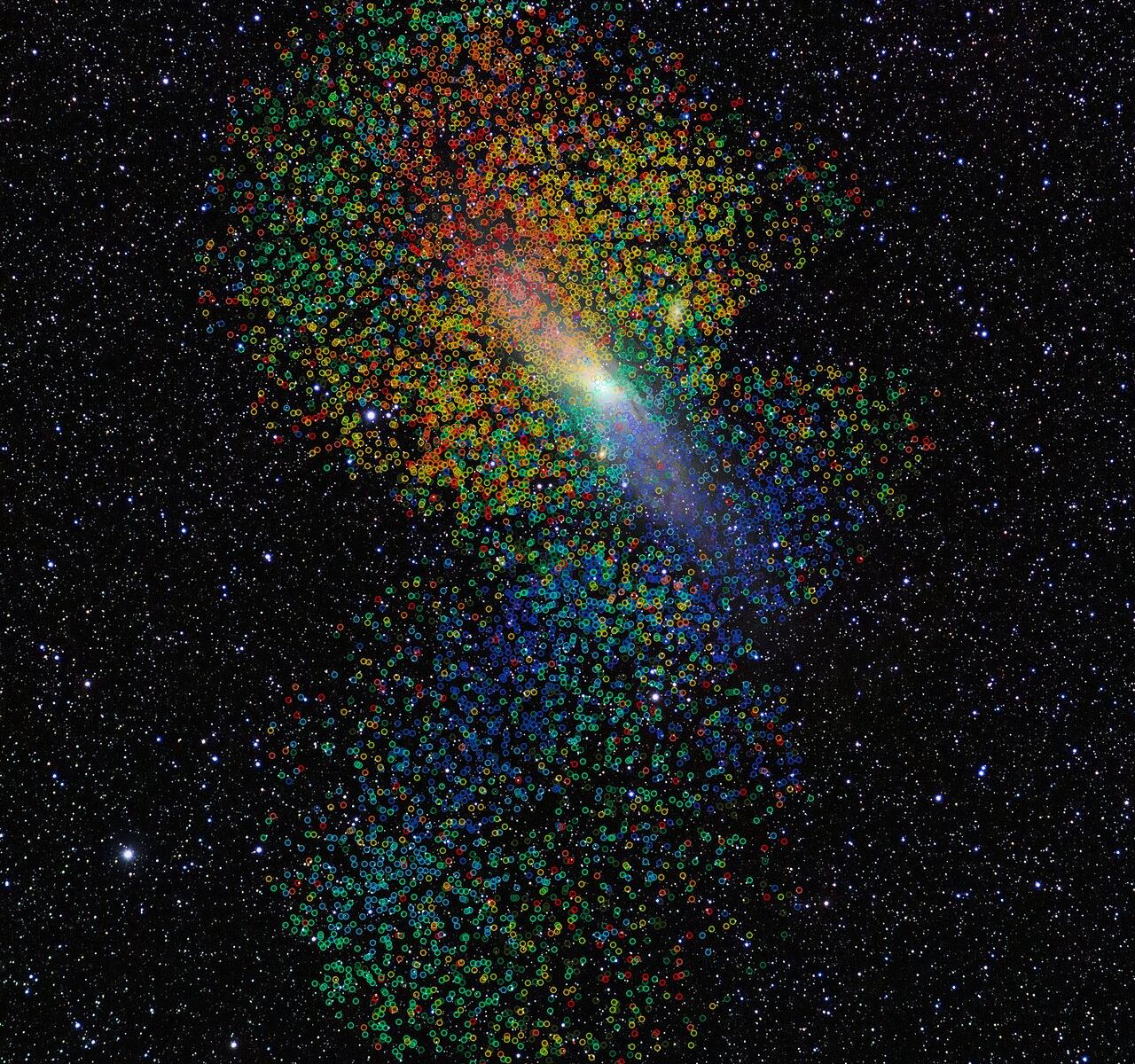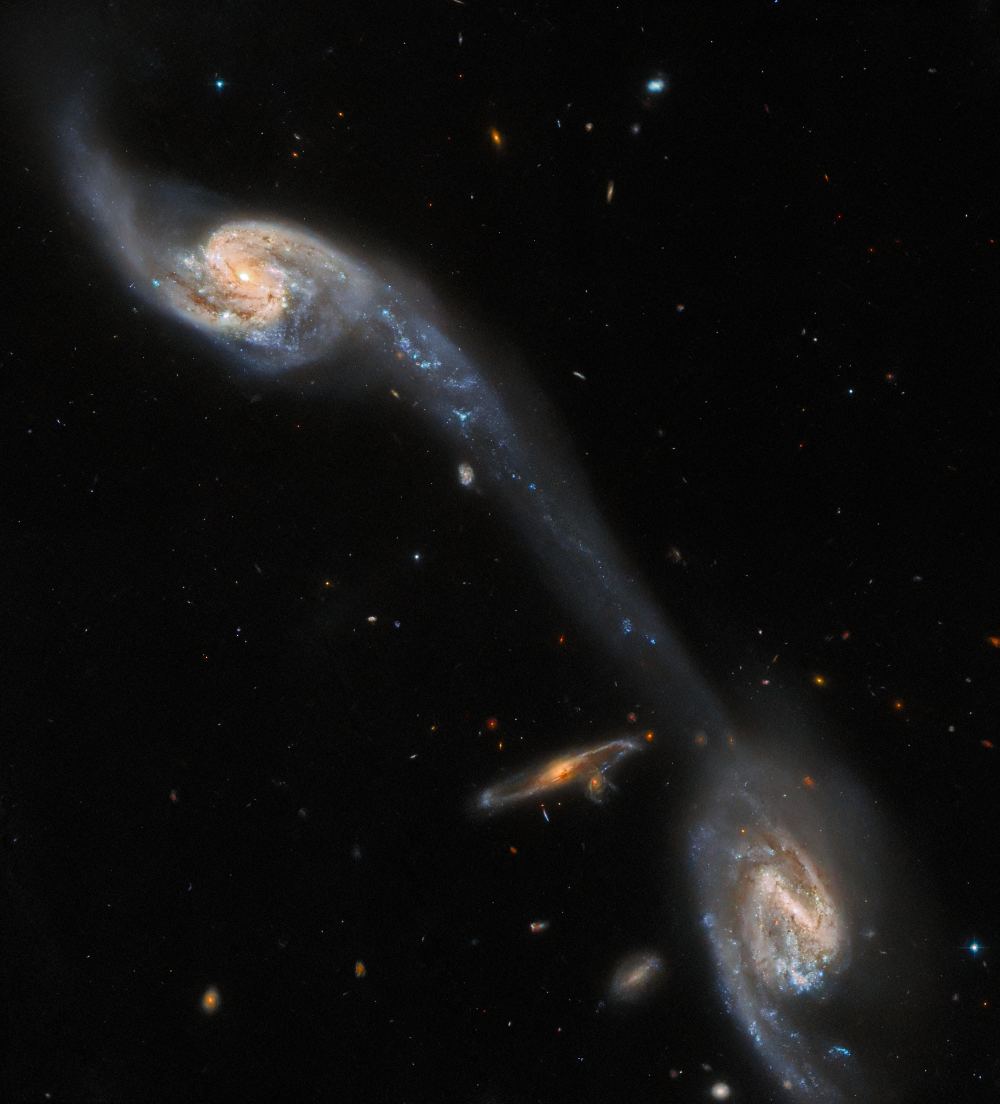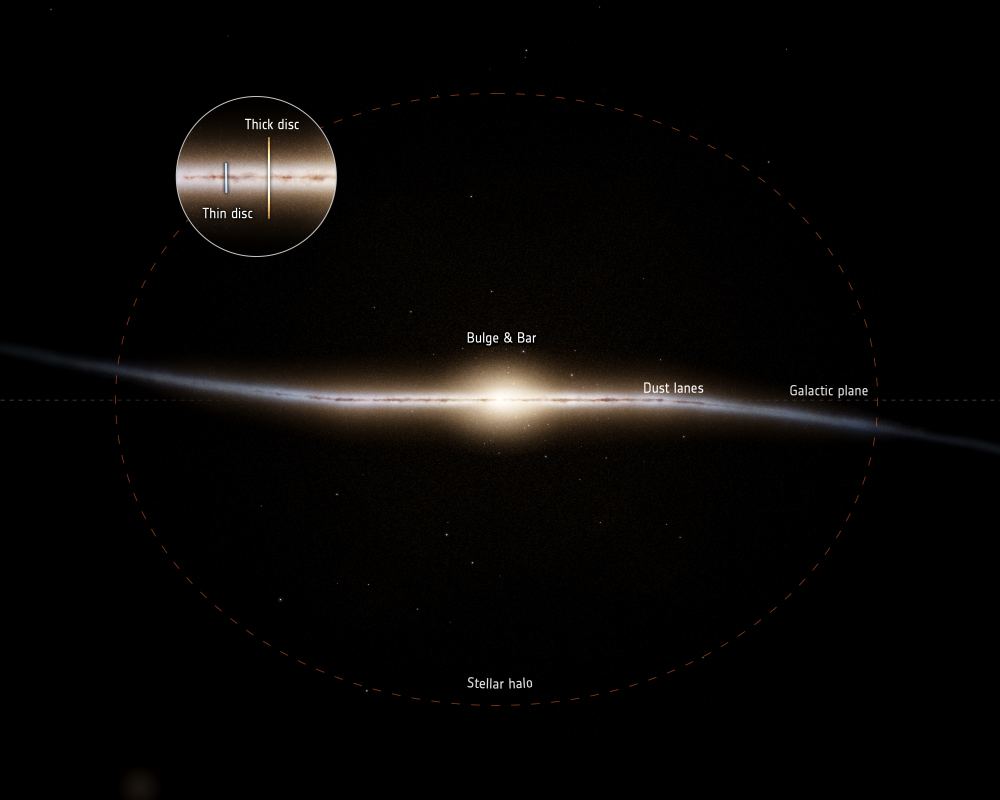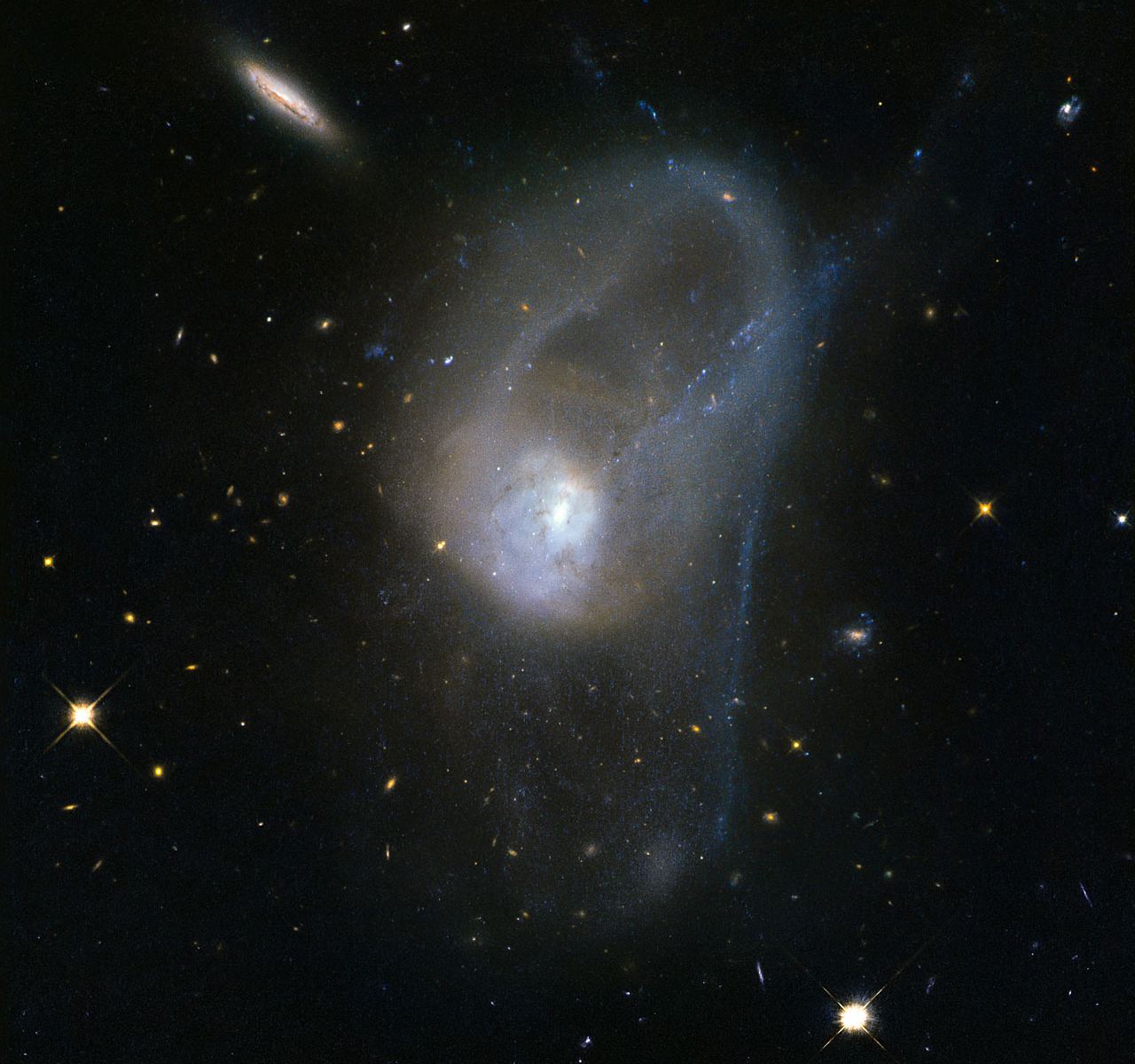If we want to know what it’ll look like in about 4.5 billion years when our galaxy merges with Andromeda, we might take a look at ARP 220. ARP 220 is a pair of galaxies that are in the process of merging. The merging galaxies emit brilliant infrared light, and the James Webb Space Telescope captured that light in a vivid portrait.
Continue reading “JWST Sees Merging Galaxies Releasing the Light of a Trillion Suns”JWST Sees Merging Galaxies Releasing the Light of a Trillion Suns










